#Troupe ttrpg
Explore tagged Tumblr posts
Note
📖, 💡?
Two excellent questions. We'll take 'em in order!
📖 My favorite class or playbook from a game.
It's funny, this question. I'm someone who prefers to run games rather than play in them, so I don't really spend a lot of time thinking about classes/playbooks unless I'm designing a game (my current project has had me doing a lot of reading over different playbooks for inspiration). So I'm going to cheat and give you two answers.
The first answer is the Ghelf from TheOriginalCockatrice's game Troupe. The Gelf is a preening pissant, someone petty and small and full of self-importance with a flair for the dramatic. They are hard and bitter but believe themselves to be loving and sweet. They are in so much agonizing denial that my heart hurts to think about it. I think TheOriginalCockatrice did a phenomenal job expressing the ghelf's wretchedness, their vulnerability, and their allure.
The real answer is the one I am embarrassed about, the one I knew was my answer as soon as I read the question, the one class that has stuck with me since I read it as a middle schooler in the Complete Warrior book for dnd 3.5. I feel like an indie ttrpg poser that my favorite class is one from dnd, but let me talk to you about the Warshaper and maybe you'll see why it has been in my bones since I was 13.
The Warshaper is a prestige class, something that doesn't exist in dnd 5e (thank goodness). Prestige classes had to be built into, you had to multiclass in just the right way, do the right in-game things to qualify, take the right character customization options. And some of them were utter garbage and some of them were incredibly powerful. Like many things in 3.x, there was a kernel of a good idea somewhere in there, but the implementation was horrible.
The Warshaper's most onerous requirement was that you had to be able to change your shape, to transform from one body to another. A wizard's polymorph would do, as would a druid's wildshape. As would being a werecreature, as well. And the central premise of the Warshaper class was: what if you could change your body better? Now, this was dnd, so the implementation was all about combat - you can grow more natural weapons, they do more damage, you can rearrange your organs and muscles to make you immune to critical hits, your limbs can extend up to 10ft away from you. But the idea behind the class was immediately compelling, and as a deeply, deeply closeted trans teenager, as soon as I read this class I knew I wanted to be it, in a powerful and personal way. I also, being a deeply, deeply closeted trans teenager, never attempted to build a character that could take the class. I thought about dnd a lot more than I played it, and I made dozens of characters. And I was never brave enough to make someone who could transcend their body-of-birth and take this class, at least not until many years later, in college, when I played my first female character. Playing her was probably the closest I came to realizing I was trans until my egg actually did crack.
So, yeah, the answer I like to that question is the Ghelf. My real answer is the Warshaper.
💡 A game that inspired my own design or creative practice
Here I have many equally true answers. Honorable mention to dnd 3.5 for being so poorly designed that I had to start designing for it to patch up the gaps and salvage something good from it.
The actual answer, well, one of them, is Kazumi Chin's Rogue 2e, which is a love letter to the OSR and storygame ttrpg genres. Rogue 2e is an elegant game. It uses as few rules and mechanics as possible to communicate worlds of potential. Chin's game really opened my eyes to indie ttrpgs more broadly and proved that the adventuring ttrpg experiences I had grown up on could be built in so many more ways than I had thought possible.
Another answer, and the last I'll give for now, is Alexis Smolensk's D&D. Smolensk is a phenomenal writer and his blog (tao-dnd.blogspot.com) is an invaluable resource to anyone looking to run, play in, or design adventure ttrpgs. He has been building his world and expanding his rules for decades with the care and artistry of an expert craftsman. He showed me what adventure games could be, that the skills involved in running them could be deeper than I had ever imagined. I will spend the rest of my life trying to meet his skill level, and I hope that one day people playing in my setting can have half the fun I had playing in his.
10 notes
·
View notes
Text

TTRPG Portrait Pack
A portrait pack from April! This one was all about circus theme with a dullahan, githyanki and a tiefling!
This pack and all the characters from the rest of my packs are available for all my patreon and ko-fi members starting from 1 dollar tier~
~ Patreon | Ko-fi ~
#fantasy#art#fantasy art#character design#dnd#bg3#baldurs gate#circuscore#circus troupe#dullahan#dungeons and dragons#dnd bard#jester#githyanki#tiefling#dnd character#dnd art#ttrpg#ttrpg art#ttrpg community#ttrpg portrait
20 notes
·
View notes
Text
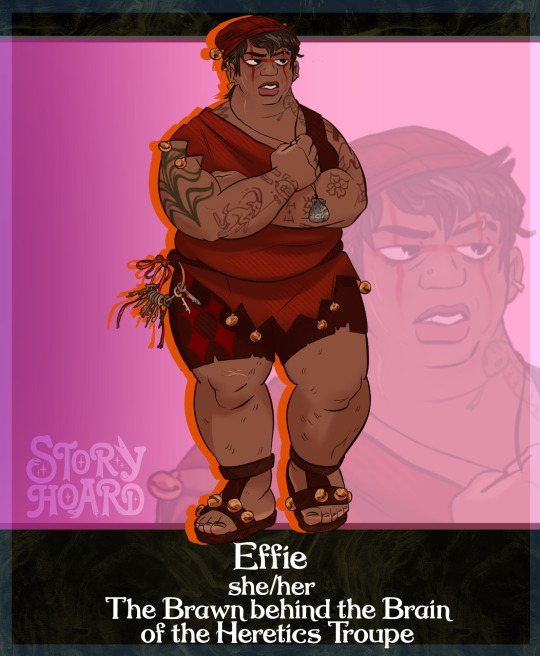
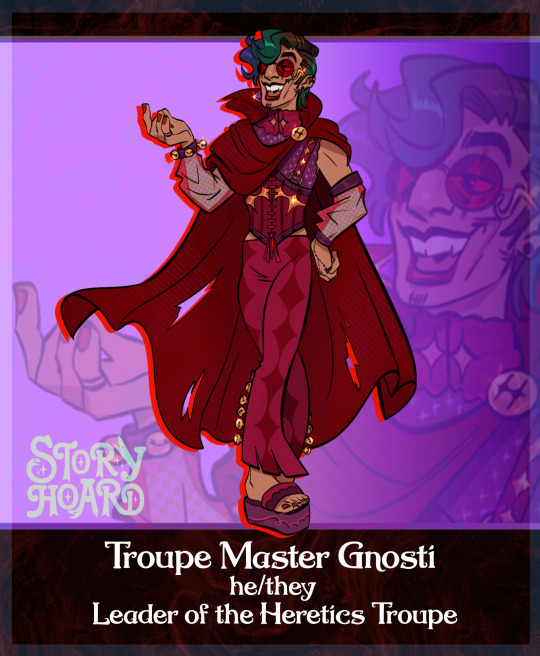
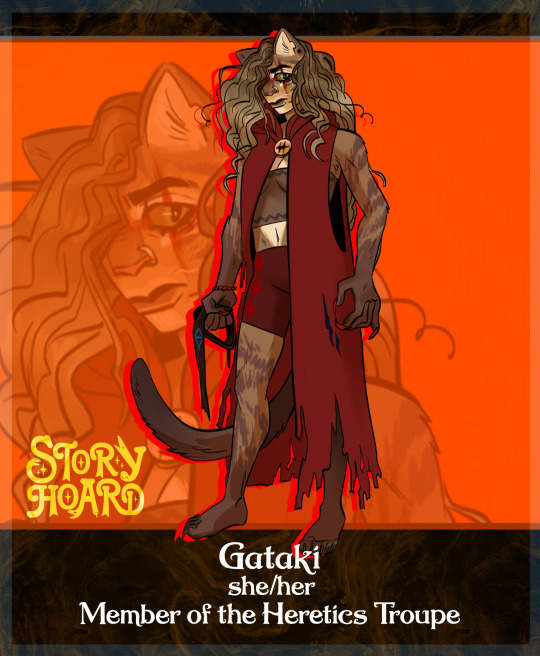
Friends or foes? With the Heretics Troupe it’s hard to tell.
[art by @night-margie ]
#illustrations#dnd oc#dnd podcast#ttrpg oc#ttrpg podcast#catgirl#welcome to the lgbtq-I mean-the heretics troupe#clowncore
11 notes
·
View notes
Text
reminded of these dudes because this time last year i was starting to sneakily work on them!
such a fun project

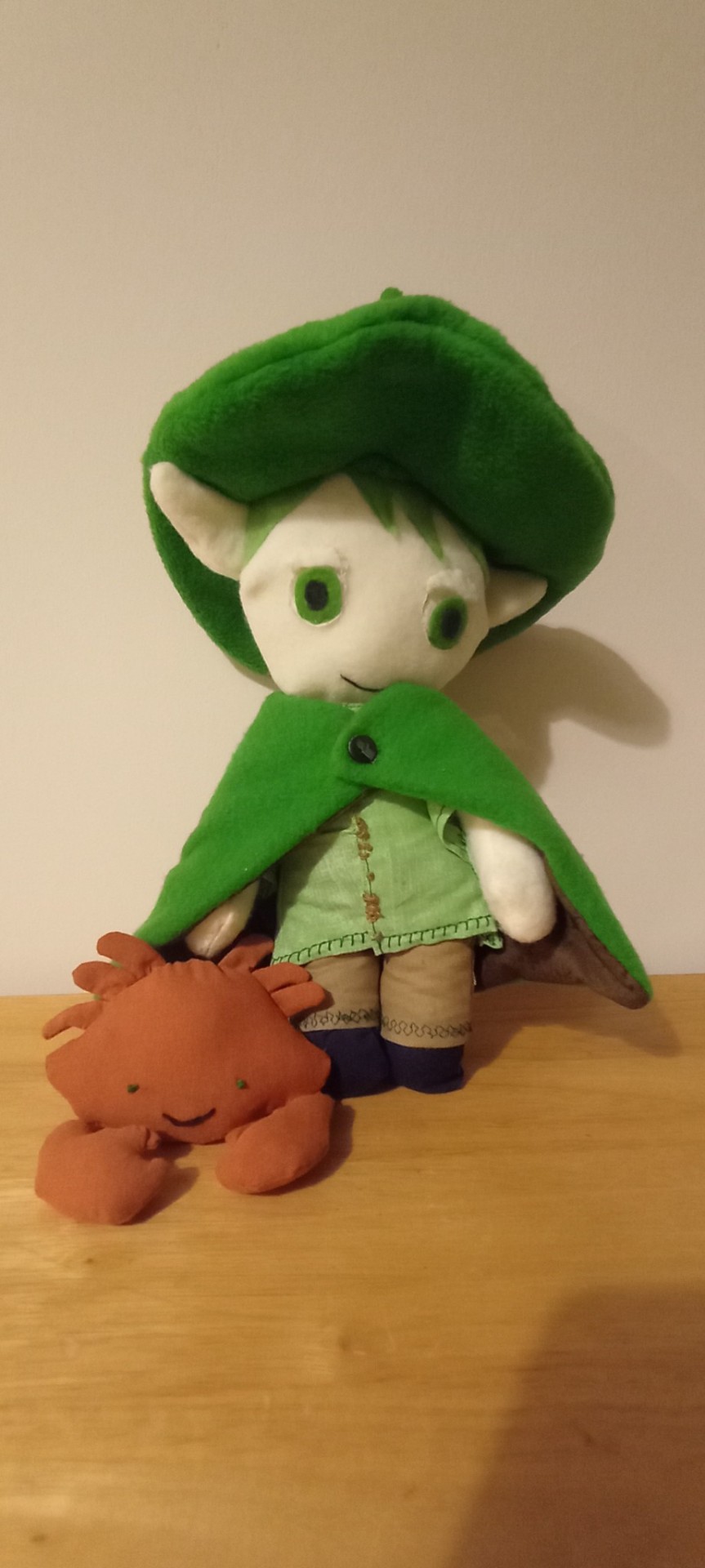
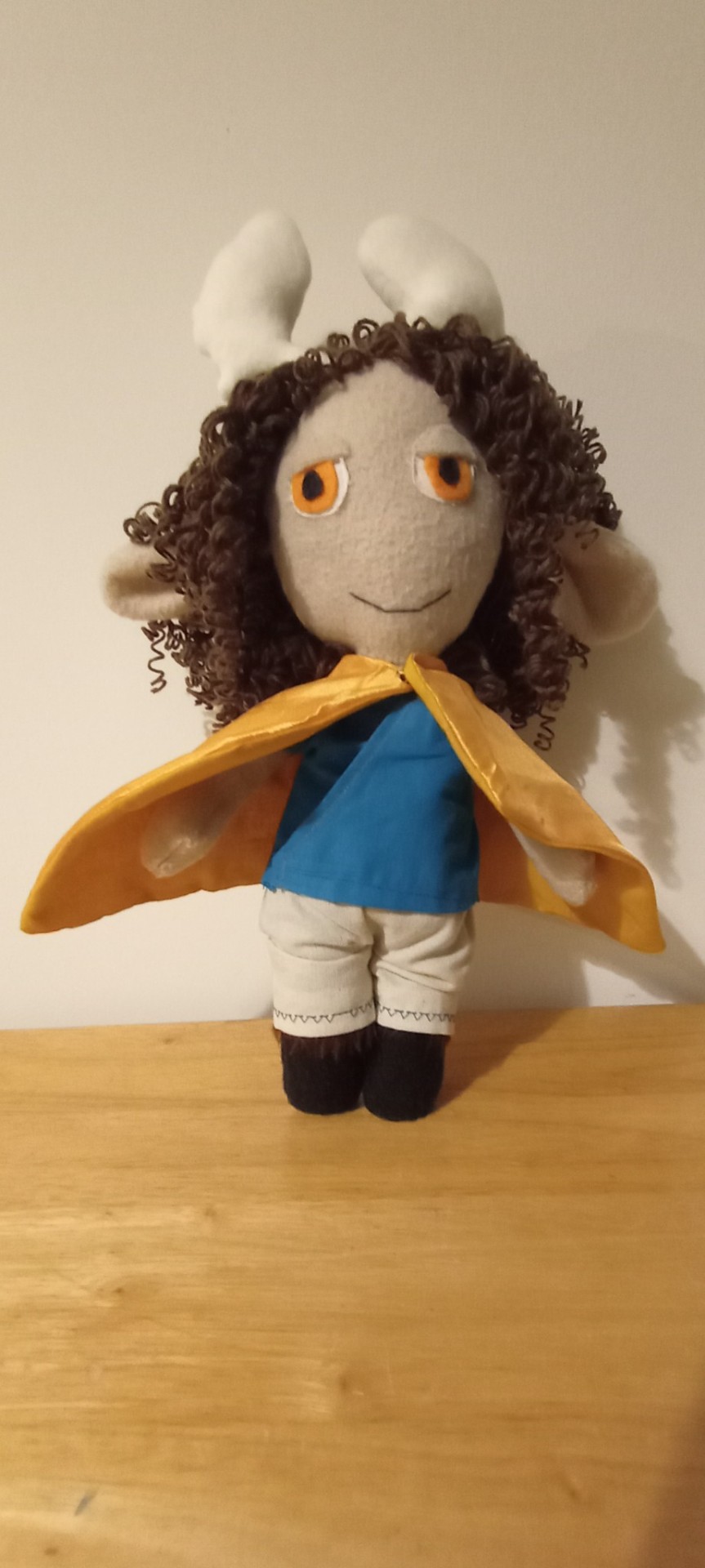
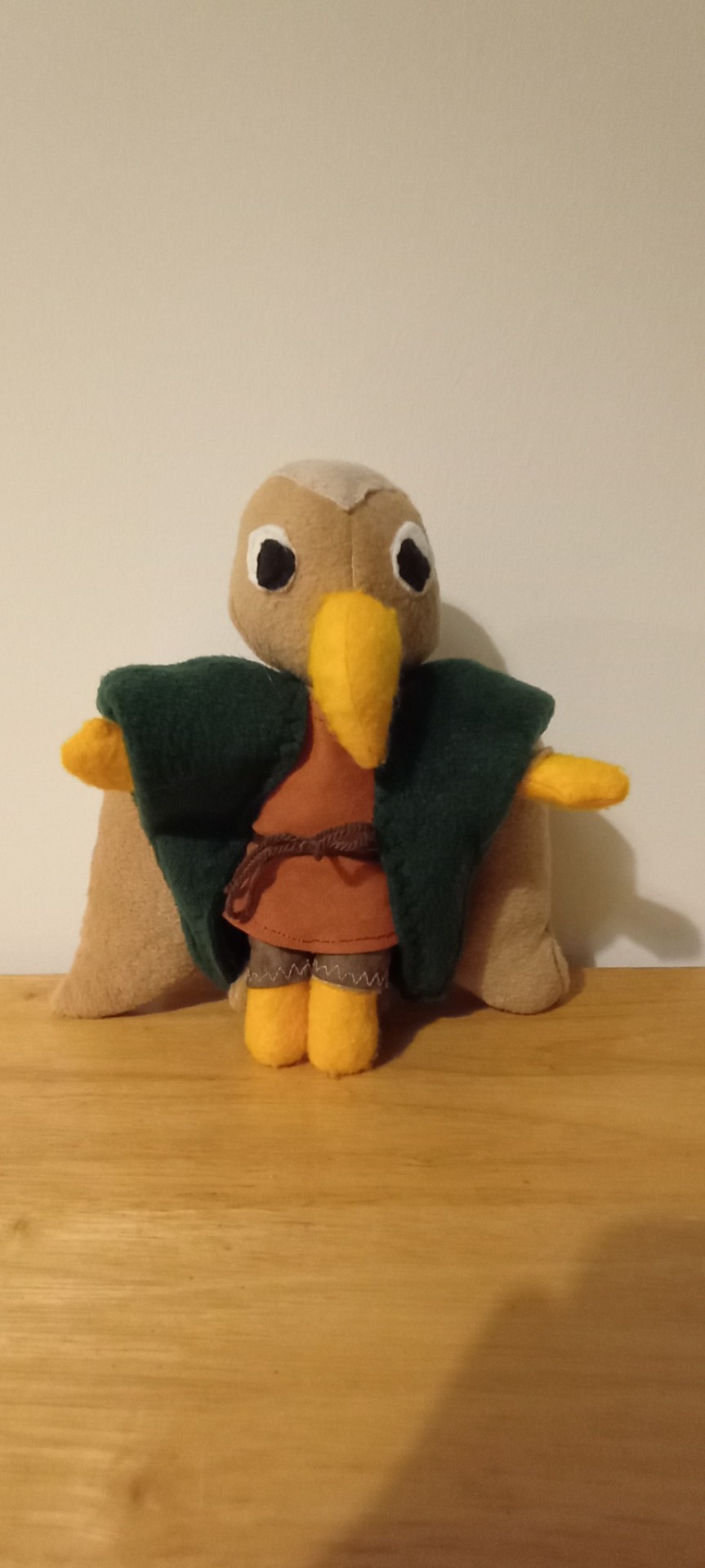


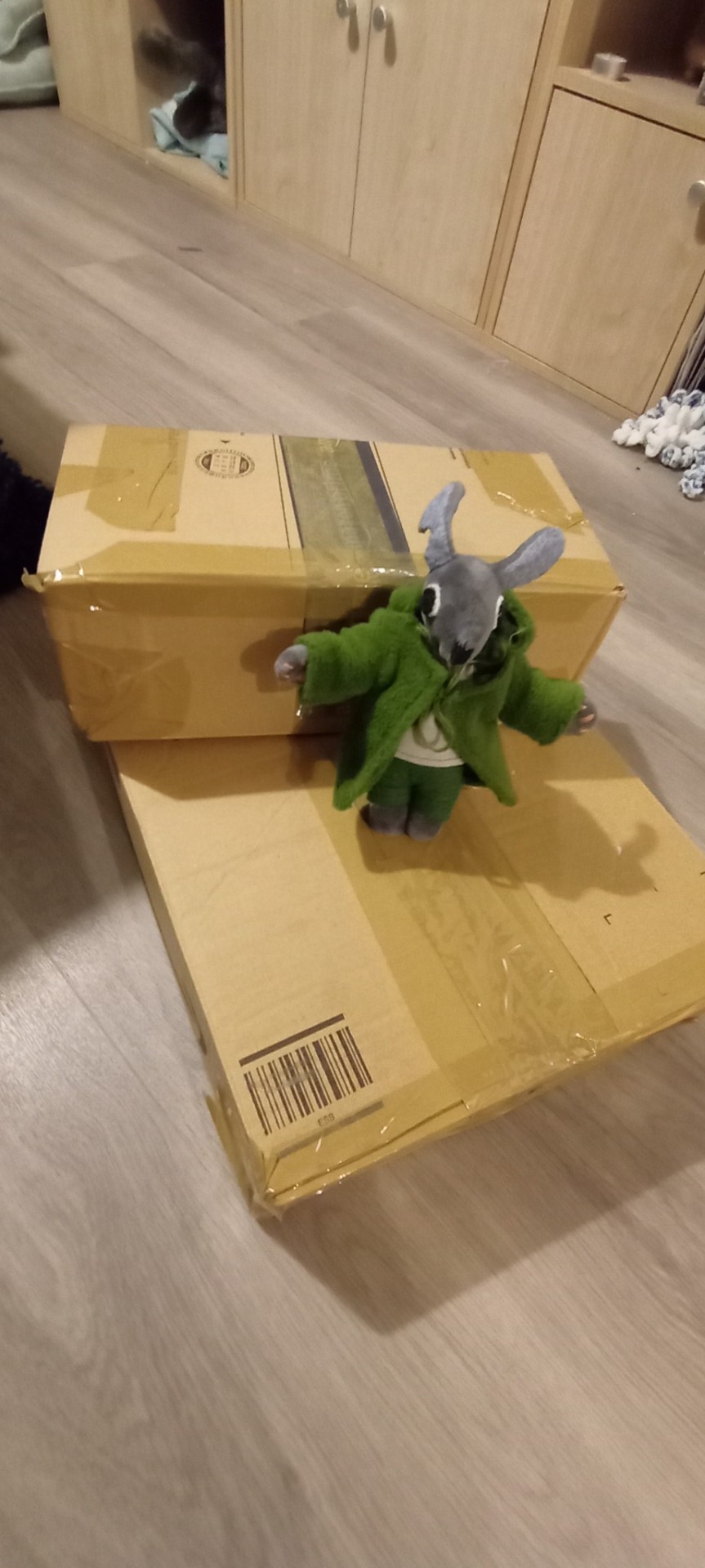
The DND crew but in plush form!!
This was such a fun project, they're being shipped off to their players now!
#dnd#dungeons and dragons#plushies#fanart#handmade#trauma troupe#moss#kehaar#willabuck#cyrus#multiverse#ttrpg#ttrpg art#stuffed animals#plush toy
6 notes
·
View notes
Text
I'm interested in forming a sort of...math & physics reading group network. well, with some very important modifications to the concept of "reading group".
for example, right now, I'd like to learn algebraic geometry, qft, and/or refresh myself on representation theory with someone—maybe just one or two people—meaning that traditionally, we'd pick a text for one of these topics, discuss the material (asynchronously or synchronously?), exchange exercises, etc.
but currently (being Between Institutions), my best bet is posting on tumblr. and that's a pretty good bet, tbh! there are a lot of us here!
though, wouldn't it be great if there were a way to coordinate groups like this across institutions? you make a post proposing a group, specifying your goals and constraints...
even that would be a boon. but I think the concept of a "reading group" itself could be changed in interesting ways. this is what I'm really interested in.
there are variations among reading groups themselves already. sometimes you have directed reading groups, where someone already knows the material and "leads" it; some people are looking for more or less people involved; and there are probably things to explore for making sure that reading groups stick through it instead of falling apart when some motivation flags. default meeting times help with this, for example.
there are many experiments to be done! I think lessons for group-making can be taken from a maybe-surprising source: theater. there are a lot of things that make groups which put on shows more robust and rewarding than reading groups. a sense of building to something; many factors that create informal group cohesion (e.g. such a structure should make sure it creates more-informal "cafe" time in addition to more-formal "practice" time, just as rehearsal in physical spaces facilitates that casual sort of interaction on its periphery); ways to get into the right headspace during discussions (just as warm-ups do in theater; the engagement with this material is an event); clear goals (e.g. "understand ___"); successive shared accomplishments...to that end I wonder if it makes sense to form math troupes, which do successive reading groups together, drawn from its members.
it might be useful to envision some sort of public-facing artifact created as the culmination of this learning, whether a presentation, or an article, or some novel application or research...the crucial question is: how do we choose a goal that we find meaning in?
one idea, for example, is to have a collection parallel reading groups learning different things, and end by presenting to each other! that way we know what we learn will be meaningful to others, too, from the beginning. in general, I think it's important to feel that our own development of insight and understanding can be meaningful to others and to the group. it's nice to participate; it's nice to be able to offer something that is valued. what form can this take? how can you set up the interactions such that everyone has a part to play, and so this meaningfulness is tangled up in participation in the group?
I've also got a couple of ideas for "activities" that let us engage, re-engage, and play with the concepts we're learning with each other, beyond the text itself. how can we give ourselves the opportunity to toss around the concepts we're learning? I believe that the fun ultimately comes from the understanding itself, and therefore that any group exercise which lets us effectively play with the ideas will be fun.
it's a lot to ask people to come up with structure like that themselves, but using a pre-existing structure is not so difficult! sort of like how it's hard to make a TTRPG itself, so simply saying "go off and roleplay" isn't that helpful, but it's easy to use the structure of an existing one to run a game.
you might say, well, the existing form of a reading group is fine. okay! existing reading group structures can be low-stakes, relaxed, and accessible...but they can also fall apart easily (especially when not tied to an institution, in my experience), and you have to get lucky to find a truly rewarding one. I find reimagining our mechanisms of learning pretty exciting, and I think the space of ways to learn math with each other is underexplored at this level (emphasis on the with each other). there's a lot of potential!
anyway! reply or tag with "!" if this is something you could maybe be interested if done well? or if you're at least curious! I'm just taking a temperature. :)
189 notes
·
View notes
Text
Theme: TTRPGs For Accessible Gaming Charity Bundle
The TTRPGS for Accessible Gaming Charity Bundle is going on until October. 20, and has 314 games included. There’s some real gems in this pile of games, so let’s highlight some that I’m excited about!
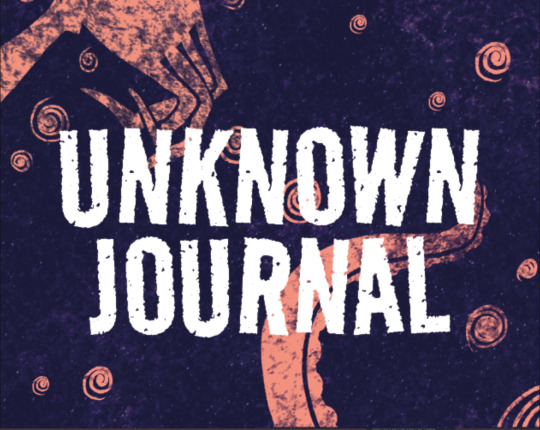
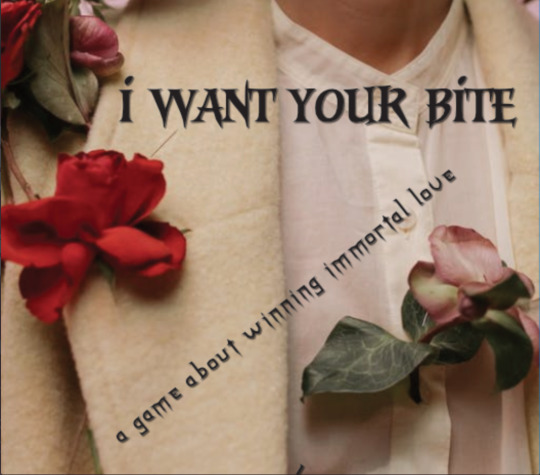
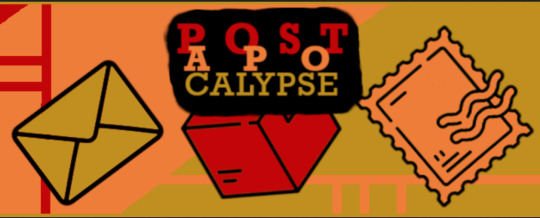


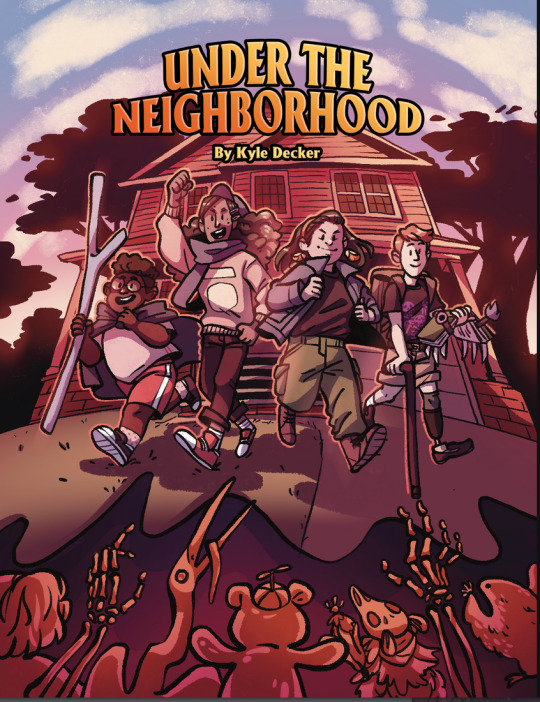
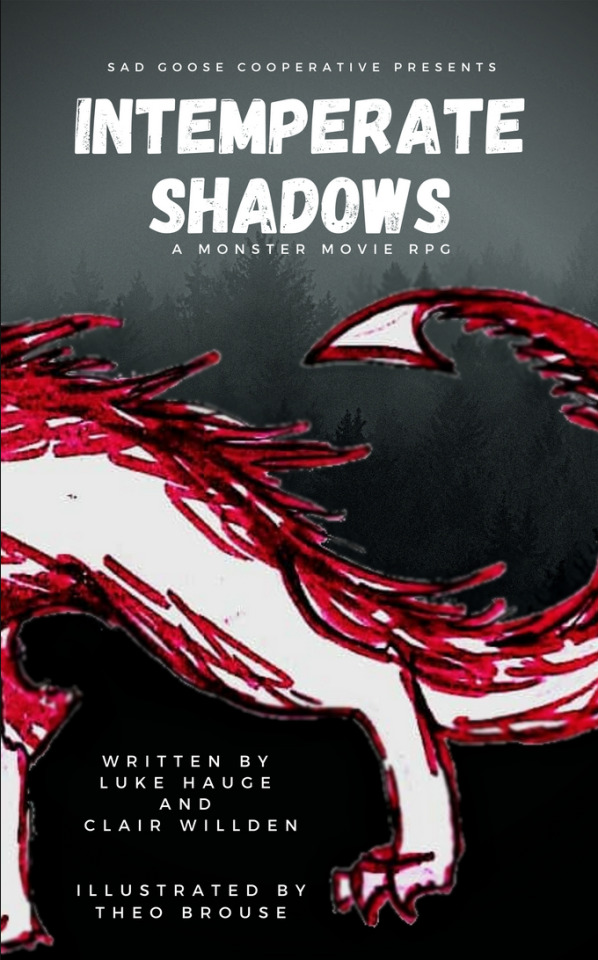
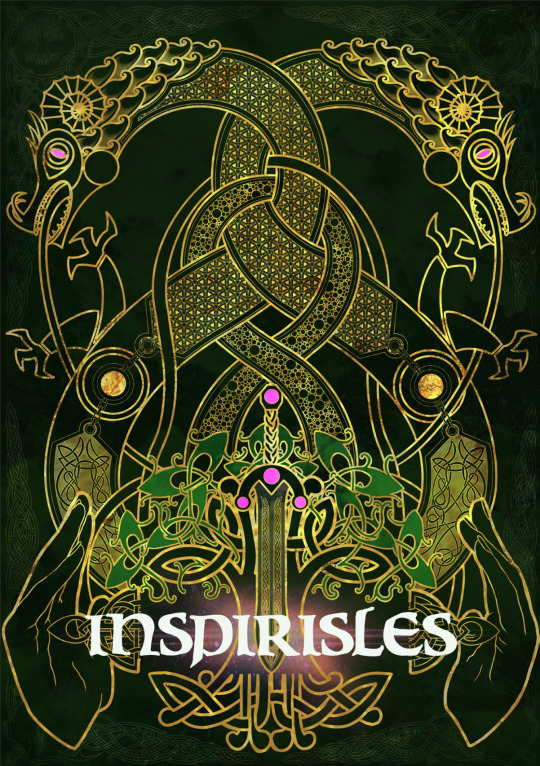
Unknown Journal, by Mori Seika.
Unknown Journal is a solo post apocalypse TTRPG in the same universe of its’ sister game Unknown Signal. In this universe mysterious beings have taken over the world, and they can take over human's bodies, making it really hard to distinguish between humans and monsters. It is best to ignore anyone you see, you never know who is human, and who is actually one of them. You'll need to look for resources, deal with monster encounters and maybe find some people you can trust.
Unknown Signal appears to be a video game designed by the same person, so this appears to be another way to engage with the world they built, with a journal and dice instead of a computer program. The printout includes a number of event tokens that you can cut out and put into an opaque bag; these will generate random events that will affect your character as they try to survive.
This looks to mainly be a resource management game in a post-apocalyptic world: every event has the potential to drain your resources, or force you to roll for consequences. Because events happen in a random order, your ending scene is determined by whether or not you’ve reached certain locations or met certain people, which I think lends this game to feel a little big like a choose-your-own adventure novel. If you love rolling dice to see what happens and using small prompts to generate fiction, I think you might like Unknown Journal.
I Want Your Bite, by Rue.
a mysterious bachelor has recently purchased the manor house overlooking the town. they're in the process of renovating- starting a new life. and rumour has it- they're looking for a partner.
compete against your fellow players for the chance at immortal love- a place by the Vampire's side.
Say hello to a competitive pvp-style rpg, but the arena involved here is love: you’re all competing to win a vampires’ heart. One person plays the vampire, and everyone else will pick up a reality tv-show style archetype, slated to engage in a number of challenges in order to score dates with the vampire and accumulate points. In between each challenge, there will be be downtime scenes that include those coveted dates, as well as other drama between competitors, probably trying to sabotage each-other’s chances or digging up dirt in the pursuit of making you appear to be the most desirable contestant of all.
What I’m really excited about is the optional Vampire Hunter rules. This changes the game, and also raises the stakes, by introducing a (secret) Vampire Hunter character who’s not here to kiss the Vampire, but kill them instead. All of the contestants will know who the Vampire Hunter is, and the Hunter will compete in the challenges just the same as everyone else - but our Vampire player will have to use their dates with people to suss out their true intentions - and hopefully pick a lover who actually wants to join them in a grand afterlife. A perfect way to change your dating sim into a hidden-role social game.
Post-Apo-Calypse, by CardboardHyperfix. @cardboardhyperfix
You play a troupe of three characters, each representing a stat. The three of you are trying to set up a route from one town to the other for delivering mail. POST represents a determined mail carrier. APO is a prepared representative from the town who makes sure you have enough supplies. CALYPSE is the protector who covers the group to keep them safe.
This one is for the solo gamers who like balancing a number of characters in their head. Post-Apo-Calypse has you build a troupe of three characters, with each character responsible for a different specialty - as well as different facets of the game. You need index cards, 12 Fate dice, and a pencil in order to play this, as well as a map that you can move your little group around on, and an inventory of the letters your mail carrier needs to deliver.
The game comes with generative tables that you can use to determine your surroundings, as well as the obstacles that will stand in your way. You’ll use a character (or perhaps the trio, working together) to overcome the obstacles by rolling the dice and looking for positive results - the more you get, the more obstacles you can clear. Your characters also have an exhaustion mechanic; if too many folks get too tired, they’ll have to return to home base before they can continue. However, any progress you make on your map will be saved, so the next time you venture out, you’ll likely get farther - and eventually get to another town.
The Girls of the Genziana Hotel by Hendrik ten Napel @hendrik-ten-napel
She only left behind a bloodstained stocking…
The Girls of the Genziana Hotel is a roleplaying game about chambermaids investigating the disappearance of one of their own: Marga, the boyish girl with the wild curls. It is the nineteenth century and all the girls work at the Genziana, an alpine hotel at the edge of the German territories. The Napoleonic wars have come to an end and Germany is changing—but you don't care about that, you just need to know what happened to her.
The Girls of The Genziana Hotel is a great game for folks familiar with other PbtA games, especially games like Brindlewood Bay or the Between. It’s a horror murder mystery, about a group of girls trying to find out what happened to their friend - and nobody else seems to care about her. The themes here are rather heavy, and are likely to centre feminine horror, including a potential reference to abortion, harassment, and violence.
There’s a couple of optional PbtA mechanics that show up here, the primary one catching my eye being the rolling with advantage/disadvantage mechanic. This involves adding an extra dice to your roll (making it 3d6 instead of 2) and taking the two highest or two lowest numbers, depending on the situation you’re in. You’ll also be slowly uncovering Marga’s fate as you play, and as you do so you’ll simultaneously uncover the kind of girl she was - and perhaps also why you miss her.
I think the biggest potential for the emotional side of role0play here is the Grief moves - different ways of grieving that differentiate your character from everyone else. These moves allow you to interact with a specific part of the game differently from everyone else, but also embody different ways of grieving someone who’ve you lost, and I think thematically it really ties in with the whole story that you’re trying to tell.
shadow/giant by PsychHound. @psychhound
It don’t matter how you got here. Don’t matter what the destination is. At some point, somehow, against the odds … Shadow felt safe with the Giant. And the Giant, though they mighta sworn off it before … cares for the Shadow. There’ll be threats. Always will be. But, maybe, you can get through. Find safety. Together. As long as it takes to get there. And through those long days, cold nights … the tears, the fears, the fighting … someone, somewhere … might just mistake you for a family.
Well. Wouldn’t that be somethin.
Shadow / Giant is a duet roleplaying game about finding care, safety, and family amidst a malicious and unaccepting world. In it, one player will play as the Giant – a gruff and jaded adult who thought their care for the world was long gone – and the other will play the Shadow – a child with magical abilities who now relies on them for protection.
First of all, I want to say that I am in awe of @psychhound ’s layout skill. This game is so beautiful, and it makes me so so jealous but in the best way. This is a duet game with asymmetrical rules, inspired by another duet game called Badger & Coyote.
In Shadow/Giant, one person plays the Giant, who is wrestling with mistakes they may have made in their past, and is doing their best to take care of the Shadow, even if they don’t feel equipped to do so. They build a dice pool out of skills, traits and the Shadow’s assistance, and use the highest result to determine how well or how poorly they do. In a way it reminds me of Forged in the Dark games.
The other person plays the Shadow, who has suffered something that scares them, an event possibly linked to their special powers. The Shadow chooses a single skill number to represent both their strength and their weakness. This skill number shifts up and down whenever you fail, with two conditions that will end the game should you ever reach 1 or 6.
The rules for shadow/giant have a strong narrative voice, which immerses you in the tone of the fiction even as you learn how to play. I’m a huge huge fan of the amount of art built into the design of this game, and even if you don’t have someone to play this with, I think reading the document in and of itself is a worthwhile experience.
Under the Neighbourhood by Quest Friends!
An eccentric girl enters a world of magical monsters and decides to become a witch. Twins discover a mysterious journal in the woods near their great uncle’s house and delve into the world of cryptids the journal describes. Three friends get lost on an island filled with frogs and fight to find their way home.
Under the Neighborhood is a tabletop roleplaying game for 3-6 players using the Powered by the Apocalypse engine, where players live out adventures from their favorite Saturday morning cartoons. All you need to play are some dice, some friends, and your own imagination!
Whether you want to recreate your favorite episodes from The Owl House, Gravity Falls, or Amphibia, or you simply want to go on exciting adventures in a curiously ordinary world of your imagination, Under the Neighborhood is the game for you!
Under the Neighborhood is a funky combination of PbtA design hallmarks and Cypher System mechanics. Like PbtA, you use stats and typically roll 2d6+stat to do a move. You also choose from a set of character playbooks, which establish how your character relates to the worlds around them. However, like the Cypher System, you have a special player resource that can be used like XP, or spent to activate special abilities or improve a roll. You also choose a descriptor, which makes your character especially unique, and grants you special items, skills, and inabilities.
You also build you own setting, but no matter what world you create, your world will have Mundane elements, Magical elements, and elements of the Other. The mundane elements will include what makes this place feel normal, but they also come through when you create your character complication: you’ll have small, slice of life problems that are important to you as a character, but probably don’t matter as much to the rest of the world. You’ll also have to define what is different from regular Earth - maybe the dead come back to life, or there are animal folk who live as our neighbours. And even though this world is Magical, there will still be bits of it that are Other - another place or dimension that connects the setting, but it’s unfamiliar, and provides special challenges. (@oddatbest you might like this one)
Intemperate Shadows, by Sad Goose Cooperative.
Discover the source of the scratching in the garden shed. Escape the disaster at Meitner base. Fight your undead grandmother in the crypt beneath City Hall.
Intemperate Shadows is a GMless no-prep horror-adventure system where four players simulate a monster movie, building from a subtly sinister opening scene to a no-holds vbarred showdown at the game's conclusion. Over the course of a three to four hour game, you'll pass control of the monster from one player to the next as a series of desperate decisions pushes your characters closer and closer to victory--or destruction.
I might have a bit of penchant for PbtA games - although I didn’t necessarily realize that this game was Powered by the Apocalypse until I opened it up. It’s boiled down to a few essential moves, with a broad interpretation of possible outcomes encouraged - whatever makes sense for the fiction. You slowly reveal a monster as you play, in a way that leaves the group’s odds of survival up in the air all the way until the end.
This is also a no-prep game, meaning that you’ll learn it as you play it, with an infographic mapping out each phase of the game in sequential order, as well as instructions for each phase as you get introduced to it. Your characters are fairly simple, because the focus is on what you can build together; I think this might be a great exercise in building onto elements introduced by other people to create something new. It’s also potentially a great way to give the entire table a chance to try out a part of the GM experience. I think it might also be a neat tutorial for roleplaying in general, as every action that a character can do requires that you answer a prompt question before you do the action.
The game itself culminates in a showdown - players will add up victory points accumulated over each phase, to find out whether they won, and if so, how final the monster’s defeat is: did you temporarily stop it, or put it away for good?
Inspirisles by Hatchlings Games.
Experiencing visions of a mythical land throughout childhood, you are guided to a kingdom ruled by the fae. Responsible for a pact made long ago by your ancestors, Arthur & Guinevere Pendragon, you must now earn Belief and the respect of their gods to secure your ticket back home.
INSPIRISLES is a completely original all ages Tabletop RPG promoting storytelling, empathy and Deaf awareness with an emphasis on cooperation.
This game takes place in a fairytale setting that places a heavy focus on elemental magic and opposing energies called Belief and Disbelief. Because of the use of four elements, I think the ideal play group is probably one gm and four players. Your character background is built through memories that you choose during character creation, and you also have to choose a patron and element. This elemental choice is going to be the biggest thing that differentiates you from the other characters. The game also has a mechanic that I’ve seen before in We Are All Mad Here, that being a location in-game that is a designated safe space; where your characters can retreat to for sanctuary.
The game comes with links to an online resource with sign language tutorials, as well as an explanation on how sign language can be incorporated into gameplay. There are different levels of sign that can be used, from Weak (finger-spelling) all the way to a “Bonus” level that includes learning signs for basic vocab attached to the game world. The game also comes with plenty of information about Deaf culture and ways to communicate respectfully and efficiently in sign language. In this way I think it’s a very helpful teaching tool!
88 notes
·
View notes
Text

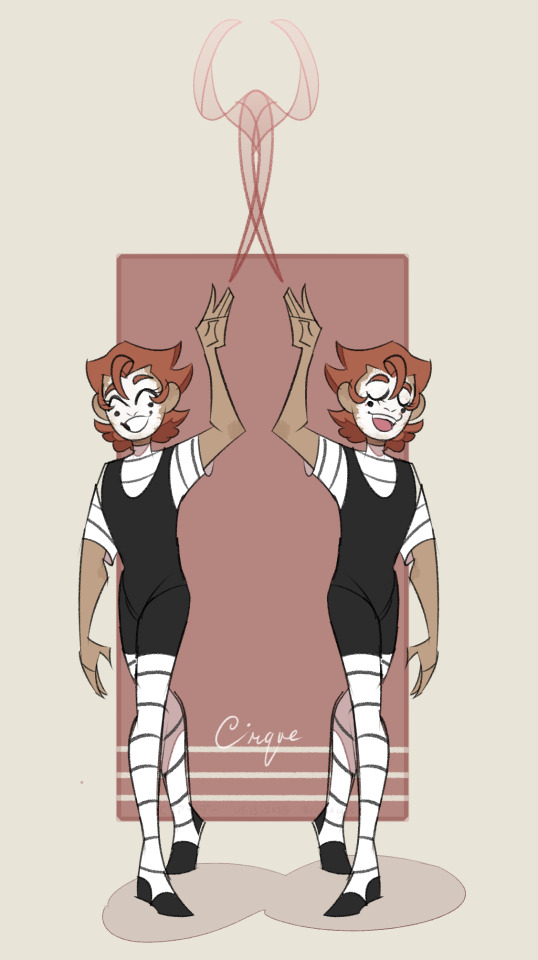
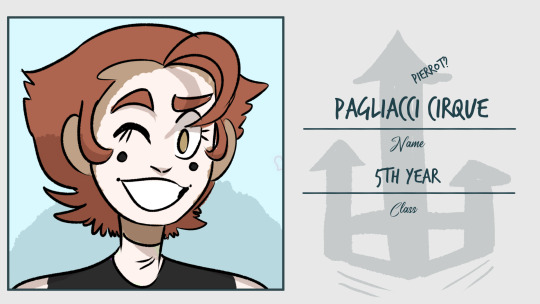
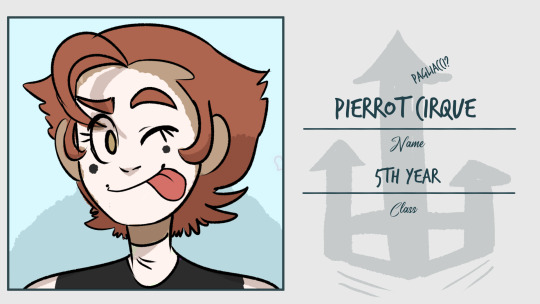
Pagliacci & Pierrot Cirque-- Twin Princes of the Big Top
I scratched out the other character because I feel the characters should get their own dues
Pagliacci and Pierrot Cirque are NPCs in the Tiny Gents TTRPG that were born from player prompt. I don’t fully remember what that prompt was, but I ended up running with it and giving us these guys! The bottom art was for when they were initially introduced, at least 3 years ago.
Pi and Cci are in their final year of school (5th years, so Seniors) and are the heads of the Improv Club. In universe, this is a club about the theatrical aspects of thinking on your feet, going with the flow, and knowing how to shake things up. Mechanically, the club served as a way for a PC to heighten their “Mischief” Stat, which is described as “Adeptability in committing Juvenile Delinquency.”
For their Home Kingdom, it's implied that they're a set of acrobats who have a shining presence in their show. "Cirque" is of course a reference to the Big Top in general, but also to specifically Cirque du Soleil... and Cirque du Freak.
They seem like massive goofs, because they are, but they’re VERY passionate about their craft and also are very invested in keeping their underclassmen safe. They’re funny, but they’re responsible, and having that combo is very important.
Campaign and TTRPG specific info under the cut.
In the first and second campaign (which I ran with two groups in tandem-- same campaign but alternate timelines. The plot heavily involved the concept of parallel existences/timelines, which is actually relevant here) the players who weren’t already in the club were introduced to them because there was going to be a big Improv Show at the end of the week that they had the option to participate in.
Here’s the poster, I’m sharing it because I think it’s fun:
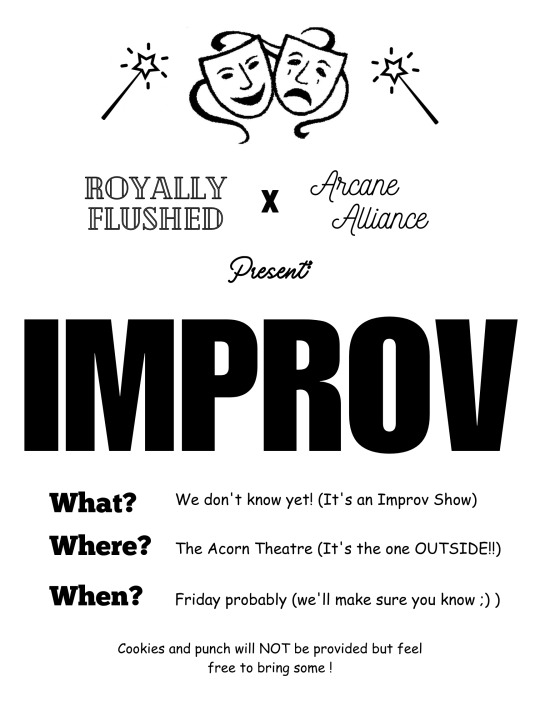
(One of the Players tried to strike an entertainment deal with the Improv Show to try and grow his school clout. He succeeded with flying colors, rolled extremely well)
The Improv Show provided two different functions between the groups; for the “Feral” group of players, the Improv Show was primarily JUST an Improv Show, where I spun a wheel and gave them prompts based on how it landed. Pi and Cci were the hosts. I’m gonna send their opening spiel, just because I like it. (This is the song I played for max ambience)
“Hello Hello Hello everyone, it is I, Pagliacci, you may also know me as Pierrot-- And me, Pierrot, who you may also know a Pagliacci--” “Heads of your local improv club!” [insert things here] “We are joined for our Big Midterm Show by this evening by the Arcane Alliance, headed by the lovely Empa Nada!” Empa: Sup (two finger salute) “A killer as always, Empa!” Well, we are happy to gather all of you here today for the show, and we will begin poste-haste, trust us, but first we wanted to thank you all for coming out-- it’s crazy that the Mid-Term has come already! Cci and I are so, so distraught that this will be our last year with you and The Flush, but we’ll certainly miss all of you! Muah! Kisses! Without further ado, however, we have some faces old and new in the troupe, and they’ll definitely be adept at taking up that mantle! Introducing, The Flush of Royally Flushed! [The curtains open] Now, how we’re gonna do things here is gonna be like a little game-- It’s the Wheel of Whims! We’re going to pick a name from a hat, and that player will spin the wheel-- the who, where and what! And THEN they will choose their partner! No one knows what they’re getting into! Improv! OK, Let’s go let’s go! First up is---”
I then had them roll Initiative :D
My Players are great at improv, some fantastic bits were had, we had Charming cast a spell that automatically bleeped out any swears or crassness (so the players could swear without fear of in game repercussion, and because Charming would know better that this is the easier solution) Played The Entertainer whenever they were on stage.
The session ended with the good times being ruined by a stage light mysteriously falling and cutting a player on the cheek. He went to the nurse who asked “so what species are you” This player had established themselves as human.
“...ah. Then. Why is your blood made of gold?”
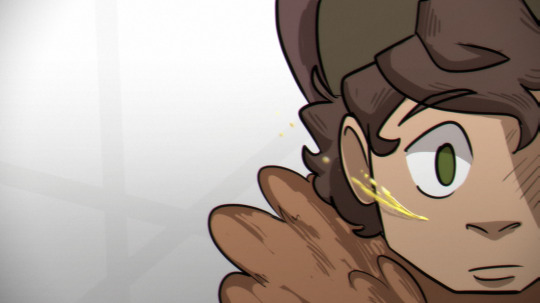
So that was a mystery!
For the “Chill” group, however, the relationship to the Improv Show was MUCH different--
For starters, the player that was already enrolled in Improv, before the campaign, had established he was one of the few people who could consistently tell the twins apart. They tend to purposefully obscure which is which, and you could be talking to either at any time. This PC, however, had firmly established in some pre-campaign roleplay that he was ALWAYS correct-- but when the campaign started, I was sure to make it so he was always WRONG. This was one of the indicators that the timeline was weird.
The Improv Show for this group also, however, came much later in the campaign, and was actually a planned attack on the student body by an underground cult (this is actually around where Funky Dude comes in. I will address the nuances of that in his post) In order to stop this plan, one PC went on stage with the troupe to lure the plan out, and the others kept watch. The Cirque Twins were lightly made aware but not with much detail, but they’re good actors so they pretended to run none the wiser while also keeping eyes out.
Played No Healing in Wonderland while they were on stage This session was super pivotal to the overall plot. Still spun the wheel, but a lot more tense.
Pi and Cci’s major role in the campaign, aside from being phenomenon that tipped off that things were weird, was to be touchstones and people the party could go to that were relatively trustworthy. They’re Seniors, they care, and they have a bit more info than an underclassman would. This ended up being more TTRPG story than on Pi and Cci specifically, but I thought it was important to mention what they did and what they witnessed! @mooncake-t
#Tiny Gents TTRPG#Pagliacci and Pierrot Cirque#long post#Tiny Gents NPC#art#goes in the art tag because I JUST drew that top illustration#I'd never given them full art or design until a few days ago.
13 notes
·
View notes
Text
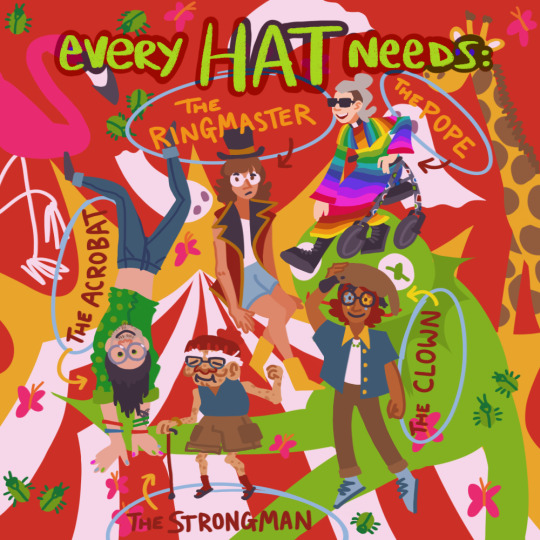
Drawing from my 3rd session of the Mountport ttrpg :)) I had such a fun time playing with you guys. We are the world’s worst circus troupe but at least we spread love and friendship (and confusion) everywhere we go <3
Characters are Sasha as the acrobat, Charlie as the ringmaster, Dust as the pope, Miles as the strongman, and Raffa as the clown.
#my art#welcome to mountport ttrpg#this was such a fun drawing to do I love colours and shapes <3#also it was so fun to play !! I love getting to meet new players every session :)#thank you times a million again to zoie for creating and organising such a great game <3333
12 notes
·
View notes
Text
Magnus Protocol Q&A - Summarised
The number of cameos from TMA characters was kept to a certain amount, though they were not sure what characters specifically they wanted to appear.
Jack is actually Celia's baby. Her claiming that she just slept around a lot and doesn’t know who the father is is apparently true. He’s distinctly non-supernatural to add dramatic tension.
The Fears have been pushed aside in favour of the new alchemy-based system of metaphysics, as the Fears have already been explained and there’s no mystery, but they don’t seem to have been completely discarded.
Only 5-10% of how the new system works is in the series so far, and Johnny thinks the full thing is probably overcomplicated - apparently, it involves "fifth-dimensional vectors". The two systems are able to function around one another.
Archives focuses on "supernatural history", while Protocol focuses on supernatural forms of other sciences.
Alexander J. Newall really REALLY hates Needles. Apparently, he was a placeholder idea and "he’s made of needles" was as much character as he initially had. Alex tried to veto Needles's existence, but he was needed to serve a specific "function" for the episode.
Needles is, however, Johnny Sims' favourite External. Mr. Bonzo is Alex's favourite.
Mr. Bonzo destroyed that car on purpose. He’s just a prick.
Protocol's writing structure is very different from Archives' because before it was just Johnny writing everything himself, but now it Johnny and Alex + guest writers on the same script.
Guest writers are usually given a selection of prompts to write for, but they can request their own prompts if they fit tonally. There’s an abridged version of the alchemy system for the guest writers to use.
There’s something in Season 2 that will link a few guest statements into their own small cohesive narrative. This stemmed purely from noticing consistent themes.
Because there’s less episodes, the plot has to happen quicker than in Archives and there’s less filler statements and direct sequels to statements.
Archives' ending was written intentionally so that they could do a sequel series if they wanted to, but they didn’t have that many ideas for it when Archives was still going. Almost none of the statement ideas pitched while they were developing Protocol actually made it into the series.
The art from the TTRPG isn’t intrinsically canon.
Things were a lot more corporate/capitalist in the planning phase before shifting towards civil services. Johnny lived with someone who worked in civil services for a few years, and similar themes are also in his book BLACKOUT.
The video game Control was a big inspiration.
Mr. Bonzo gets better benefits from his job than Alex does.
The Archivist is not Lucia Wright from MAG 130. Their actual identity is a spoiler, obviously.
Alice was written as trans because Johnny and Alex are friends with a lot of trans people. Having a trans character was actually one of the first things decided for the new series. Her being trans won’t be important to the plot.
Alex leans into the comedy-satire aspect when writing, which is why Protocol has more of it than Archives. It’s comedy was primarily inspired by sitcoms like Peep Show and The Thick Of It, as well as small sketch comedy troupes.
Colin is written like that because every person who works in IT is in some way scared of machines.
DPHW numbers do have meaning and are calculated from a real spreadsheet. Apparently how high the numbers are is biased (meaning most likely the theory that they’re related to how much fear is felt is probably true).
They claim that there is enough evidence for fans to figure out what the system means, and that they’ve seen interpretations that are close to the truth but not exactly. They note specifically that they’re how the OIAR classifies things, and not exactly how the world actually works.
The first few DPHW's done by Sam are confirmed as having been done wrong in-universe.
Johnny was the one that wanted to involve Issac Newton in the plot, and apparently things just didn’t work without involving him.
Making a podcast is very very hard.
19 notes
·
View notes
Note
Hey, do you know of any ttrpgs about casting magic as a group that are also good for having long campaigns? I know about Mage but I'm looking for something where you aren't beholden to a fixed setting :)
Ars Magica is a classic: it is set in a mythic version of medieval Europe by default, and I am not sure how well it would adapt to other settings, but I know for a fact that it supports long-term campaign play. It is basically about playing cool medieval wizards researching spells and getting involved in secular politics, and it also supports troupe play, i.e. each player having multiple characters at different levels of play.
I'm also having a bit of a hard time coming up with other answers to this question because I'd like to know a bit more about what you want the game to be about: do you want a game that is mostly about playing wizards who engage in spell research and wizard politics? Ars Magica. Do you maybe want to play an action adventure game but the characters just are spell-casters? I could see myself recommending Our Spell Is Steel or MANCER. So you know, besides the characters being spell-casters, what is it you want the characters to be doing?
13 notes
·
View notes
Text
Bxllet Clip - Strangers from the Fiefdoms
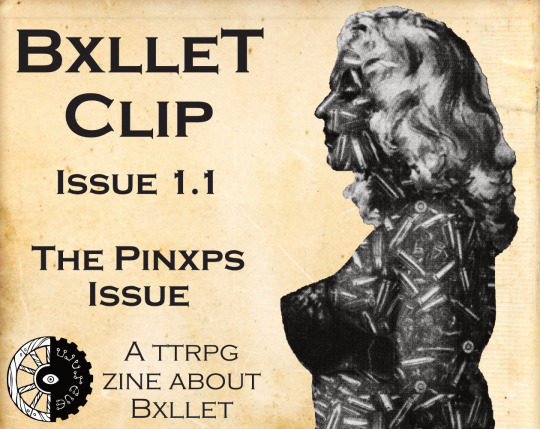
Let's talk about Gxnne, TheOriginalCockatrice's supplemnent written for Bxllet Clip. In Gxnne, TOC transports the classes and monsters from her excellent game Troupe into the Wastes of [Bxllet>.
Gxnne is full of the tiny details that gives Troupe its signature charm. The Jester's gun is a snub-nosed pistol that pops out a little flag that says "Bang." The Witch gains random spells when acquiring bullets and loses random spells when firing them. Gnashlings, those small, porcelain creatures who are full of teeth, might just be encountered shoved into a jar and being thrown at the players by someone with a gun and a bullet or three.
Indeed, several of the monsters included in Gxnne are just begging to have whole sessions devoted to their discovery and routing. They work beautifully with one of Rathayibacter's Aftermarkets, optional rules to enhance your Bxllet experience. One such Aftermarket is all about Beasts, giving them different states to flow between based upon the players' actions. This Aftermarket opens up whole new horizons of play when interacting with Beasts, and can also be easily adapted to any other game system with wandering monsters, of which, I'm told, there are more than a few.
You can pick up your copy of Bxllet Clip, along with a copy of [Bxllet> with no extra charge here! Bxllet Clip: The Pinxp Issue by Wheels Within Wheels Publishing (itch.io)
Happy hunting!
1 note
·
View note
Text
WIP Tag Game
When you're tagged, share the names of each wip doc you have no matter how ridiculous! Tag as many people as you have WIPS, if you can. Open asks to talk about these WIPS!
Thank you for the tag @nocturne-side-blog! Since it's on main, I'm gonna do this for both fic and original writing as best I can. Very much doubt I'll be able to tag as many people as I have WIPs.
Original Writing
Word Walkers (Epic fantasy series, Book 1 - Stolen Secrets is published)
Book 2 - Harts On High
Book 3 - Death_s Doctor
Book 4 - What Silver_s Worth
Book 5 - In Heart & Caer
Book 6 - Secondhand Divines
Book 7 - A Golden Gift
Book 8 - The Frozen War
Book 9 - Blue Boughs
Book 10 - Foreign Fields
Book 11 - By Tide & Troupe
Book 12 - Spies On the Summit
Book 13 - Gilded Guidance
Book 14 - Child of the Call
Book 15 - Dragon Hunted
Book 16 - Stone & Iron
The Garden & The Graveyard (Worldhopping TTRPG project)
Alana Silverwood & the Starlight Rider (In canon YA fantasy series/Arthurian kind of historical figure retelling for the Faewere setting)
Cowboy Wizard (Arcanepunk western romance adventure? About two characters in the Shattered Plains setting)
Loveless Crew (Weird maybe abandoned fae-Peter Pan thing?)
At Night I'm Surrounded By Magical Maids (Jokey light novel series for my partner)
Is This Clear Enough? (Short story anthology)
Everlight (Attempt to un-Mary Sue an RP oc I had growing up)
Fic Writing
Goddess of Secrecy
Demise's Rise
Goddess of Secrecy_Prelude To War
Legend of Zelda_Goddess of Secrecy (main doc)
Returning To Lorule
The Woman With No Name
Legend of Zelda_Mark of a Hero (omnibus)
Legend of Zelda_Restoration Age
Legend of Zelda_Cinders of Life
Legend of Zelda_Day After Destiny
The B Team Druids (SSO)
Ageless (Myst)
And I think that's most of the ones that I would still consider possible WIPs and not fully abandoned. So tagging! Trying to remember all my writing mutual who I haven't seen tagged already.
@centeris2 @karama9 @doomed-era @drsteggy @mistresslrigtar @abbyzwrites @jorvikzelda @spicymcbean @stevenpartridgequill
And anyone else who'd like to participate.
12 notes
·
View notes
Note
I’m not really sure how unpopular of an opinion this is in the fandom since it’s honestly not discussed a lot, but since it’s mentioned rather often on the pod I’ll go ahead a say it. I don’t like Dani/Davion. It feels remarkably forced.
Before I get any further, I really don’t want this to come off as shading any one who does like this ship. There’s nothing inherently wrong with it, and there are even a few circumstances where I can see the appeal. Everyone’s allowed to like whatever they want to like. Personally, it’s not my cup of tea, which I’m about to explain why, but if it’s yours, go nuts and have fun. That’s what fandom is for.
Anyways, I don’t like Dani/ Davion as a couple. It feels very hetero/amatonnormative to me. Oh a guy and a girl are bickering, that must mean they like each other and are secretly pining inside. I’m quite bored of this. Obviously this is a popular troupe for a reason, and I can…*understand* the appeal. I’m just… tired of it.
What I *can* say is I do like Dani & Davion. As like, frenemies would be the word I guess. They’re very funny. I like that they bring out sides of each other that we don’t really see otherwise. Bad sides, they’re catty bitches and it’s great. I think the dynamic of having two people who constantly, *genuinely!!!* what to rip out the other’s throat, but also, to one degree or another, trust each other is very compelling and entertaining. I genuinely liked the moment in 5.6 when Dani asked Davion to defend Brass because she couldn’t be there. As much as she rags on him, deep down she does actually trust him.
What I don’t like is when this dynamic is turned fully, cleanly romantic. It feels like it just flattens it down a lot. Perhaps this really is just an issue I’m having because of my particular experience being aroacespec. I find a lot of character dynamics far less interesting when they get cleanly slotted into the “romantic” category instead of all the messy facets and feelings that can exist in nebulous platonic/queerplatonic spaces getting to be explored (This is true of any gender parting btw).
Rolling with difficulty is a show I enjoy so much largely because of the vast variety of relationships in it. There are so many different relationship smoothies with different amounts of platonic or familial or alterous love blended in. Each of them have distinct tastes even if they have similar ingredients to another paring. None of the platonic bonds are treated as less valuable than the romantic ones, none are treated like they need to turn romantic in order to deepen or obtain true value. (Shoutout to aromantic Kyana and her bestie Ione, I loved their convo in 5.6 too.)
None of them, I feel… except for Dani & Davion.
I know really all the Davani teases have been out of character by the players, but I actually think that’s why it bothers me. It’s literally out of character. It’s forced. Organically, without outside forces like players’ out of character preferences (which of course have a place in ttrpg settings, I’m speaking solely from an in universe perspective/preference) I really don’t think either Dani or Davion would ever see the other as a romantic partner. It just doesn’t fit. I could see them growing very close, continuing with the dynamic they currently have— tearing into each other like wild dogs anytime they meet, but under the surface, the trust growing and maybe after a while even respect too. And that’s the dynamic I like.
I think the TL;DR here is something adjacent to: I’m not a fan of romantic relationships being treated as a better version of platonic ones, and, although in general RWD is very good about not falling into that hole, I feel like to a certain degree Davani (as a romantic relationship) does.
So sorry for the essay, but I’ve kind of been stewing on this for a while and it feels kinda good to get it all out in words. (Reiterating no shade if you like this ship, this is just my personal opinion! :D)
Oh this is very fair, I have to say I agree with you. It was kinda funny but yeah it never felt compelling to me, more like a joke than anything.
You put this incredibly well so I’m not sure I can say much that builds upon other than, yes, I get that.
#rolling with difficulty#rwd#I don’t dislike Danvion but yeah I also just#can’t see it#but to be fair I can’t see a lot of romantic relationships#anyway good essay
17 notes
·
View notes
Text
Revue Starlight PbtA Playbooks
Hello, everyone! I've moved stuff from the Revue TTRPG onto its own blog, to keep everything neat and orderly.
You might guess from all of the updates I've been writing that I've been really excited to work and think about this RPG. I hope that everyone can look forward to it, and that I can create a system that can allow everyone to create their own Revue Starlight stories with friends, whether with existing or original characters.
The TTRPG will be a Powered by the Apocalypse system, following a long and storied legacy of narratively-focused RPGs that enable robust collaborative storytelling. To help facilitate the portrayal of unique characters, it utilizes what are called Playbooks. (You might consider them an analogue of "classes" from other RPGs, whether on the tabletop or on a video game.) However, these Playbooks don't represent how you look on the outside, or what your weapons of choice might be. Instead, they define a character archetype, highlighting your character's core emotional conflict. For this TTRPG, the question they ask is: "Why did your character become a Stage Girl?"
Playbooks can shift between sessions as your character advances, signifying your character's growth and how a new core emotional conflict may come into focus for them. Stage Girls are too varied and complex to be defined by any one thing, after all.
Here's some examples of some Playbooks I've written up so far! (Everything subject to change.)
The Challenger
The path to becoming a Stage Girl wasn’t handed down to you in your youth. Maybe you discovered it later in life, or your family expected you to tread a different path. You seek to defy those forces who seek to dictate your life’s path for you so that you can take hold of the reins of fate yourself.
You might have a variety of different opinions on the world of theater you’ve found yourself in based on your unique outsider’s perspective. Maybe you aspire to be just like the greats, hoping to, one day, fit in with all of the people you looked up to when you started this journey. On the other hand, you might see the flaws in the restrictive, antiquated system, and aim to prove by example that it can be changed for the better.
Examples of Challengers are: Aijo Karen, Hoshimi Junna
The Exile
You’re running away from something. You were already smitten with theater back then, too, but you were in a different troupe, or maybe even a different country. However, one day, something changed: perhaps tragedy struck, or you failed at the moment when it mattered most. Whatever may have happened, you’ve spirited yourself away somewhere else where no one remembers your greatest shame.
You’re still working to pursue your goals no matter what, but your past haunts you. You’ve found new friends and family, but the fact that the people you left behind are still living their own lives scares you. You might hope to one day reconcile with the people in your past, or perhaps prove once and for all that you don’t need them to live your life.
Examples of Exiles are: Takachiho Stella, Yumeoji Fumi
The Guardian
Though it is you who stands upon the stage, you know that there are better reasons to act than just your own self-interest. You have taken on a Charge, which consists of the people or things you’ve sworn to protect—perhaps the members of your class, a childhood friend, or a memory that’s on the verge of fading away.
If your Charge consists of people, you may sometimes stand behind them to support them. Other times, you may stand by their side to work alongside them. Other times still, you may stand against them—because no one else will help them realize the errors of their ways.
If your Charge is a thing or idea, you’re likely one of its last bastions. It needs protecting—otherwise, you wouldn’t be a Guardian, after all. It’s your reason to be a Stage Girl, and you won’t hesitate to sacrifice yourself to protect it… or, perhaps, others.
Examples of Guardians are: Daiba Nana, Ogami Shiro, Tomoe Tamao
The Trailblazer
Forget what anyone else says about being a Stage Girl—you’ve become one just because it’s fun! Others train day in and day out to be at the top of their field, but compared to them, you live more in the moment. What’s wrong with that? Those stuffy girls with all of their high standards never catch a break, while you spend your time expressing yourself and having fun with the people you love most. It’s certainly more exciting than whatever you were doing before!
However, being a Stage Girl isn’t always fun and games. When hardships arise, you might find yourself questioning why you chose this life without much of a strong external force to tie you to it, relying on only your fickle whim and motivation to drive you forward. You may be searching for such a reason to stay—or, rather, pushing back against those who try to tell you that you need a better one. At times, however, you might ask yourself the most difficult question: is your personality the true you, or just a glib facade?
Examples of Trailblazers are: Otsuki Aruru, Otonashi Ichie
#revue starlight#pbta#ttrpg#dev blog#aijo karen#hoshimi junna#takachiho stella#yumeoji fumi#daiba nana#ogami shiro#tomoe tamao#otsuki aruru#otonashi ichie
46 notes
·
View notes
Text

So um… trust an asexual to craft the most sensual and sexual ttrpg character there ever has been, for an Apocalypse World campaign. I’ve roped the other two players into dancing with me so we can infiltrate an enemy area as a troupe of performers, I’m having such a good time.
Apocalypse World is a profoundly horny game, I’m having a blast this is like playing a magic user for me, so far from anything I’d do in real life but fun as hell in a game, you know?
#apocalypse world#ttrpg character#digital drawing#solve all the problems with sex#who needs melee weapons?
3 notes
·
View notes
Text
I’m currently working on the GM chapters for Footfall, and video game level design has been having a massive effect. Specifically, I’ve decided to present GMs with standardized objective types that they can then combine to construct their adventures. By focusing adventure structure on objectives, you center player choices and actions, presenting the party with situations to respond to as opposed to narratives to simply witness.
The system as is lists a bunch of different objective types (Breach, Investigate, Defend) that then walk the GM through constructing an objective of that type with an example. For instance, let’s say you want to build a Breach objective. The book would tell you the following:
“First, select a target location that the party must enter. Next, determine possible entrances or means of entry. Finally, list the Pros and Cons of each means of entry including EXP awarded.
“Example: To complete this objective, the Troupe must enter the Dragon’s Hoard Bank. Possible entrances:
The elevator lodge. Essentially the front entrance. Pros: Quickest way in. Simple. Gives 10 XP. Cons: Predictable. Heavily guarded (8 guards in Elevator Lodge, 14 in Bank Lobby).
The mountain caves. Pros: No guards. Leads almost anywhere in the bank through secret doors. Gives 20 XP. Cons: Requires an additional Surveil Objective to find. Takes extra time. Unmapped, dark, and winding. The clockwork dragon roams these halls at night.”
This gives people an idea of how they should structure objectives, room to play around within that structure, and the ability to add-on-to or change a given objective mid adventure (in case your players do, as is usual, something completely unexpected). Just enough structure to be useful without being restrictive, at least in my estimation.
This system for structuring adventures is largely inspired by videogames, particularly Assassin’s Creed and Dishonored. I really think that design principles from video games can go a long way to innovating in the TTRPG space, but that’s a topic for another day.
Do you agree with my conclusions? Disagree? Have a favorite bit of GM guidance? Why or why not?
8 notes
·
View notes